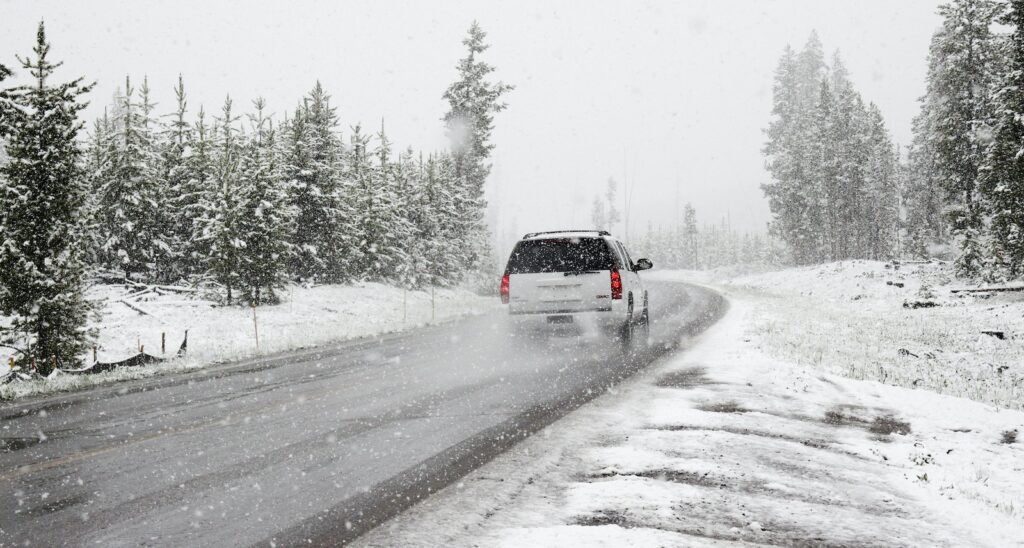

Winter driving seems to catch Canadians by surprise every year. Make this the year you are prepared for whatever winter throws your way on the road.
More than 2,000 deaths and over half a million crashes happen in the winter in North America. Many of these crashes are avoidable. To help you stay safe, we have gathered the top winter driving tips. You’ll get advice on how to :
Follow these tips, and you will be well on your way to a safe driving season.
Preparation will help lower stress levels when driving in the winter. Here are five tips to help you prepare for seasonal driving.
Tests show conclusively that winter tires outperform all-season tires. You can improve your car’s braking performance by 35% when using winter tires. They also improve your fuel consumption, and most companies will add a discount to your car insurance quotes.
Cold winter conditions are much harder on your vehicle. Schedule your car maintenance appointment with your mechanic to ensure that it runs in optimal winter conditions, fluids are topped up, and everything is running in top shape for the extreme weather.
It is mandatory to have a clear view of the front and side windows under the Ontario Highway Act. Clearing your windows is much safer and improves your visibility when driving. It is also good to clean your lights to see better and so that other vehicles can see you.
Excess snow on your vehicle’s hood or roof can be hazardous for you and other drivers. It can impair visibility and be dangerous for vehicles around you if ice or snow falls off. Before the weather turns bad, put scrapers and brushes in your vehicle.
Check and top up your windshield washer fluid frequently – it’s not safe to drive with dirty windows. It’s a good idea to keep extra washer fluid in your vehicle. Always drive with a full gas tank and ensure other fluids are topped up, so you don’t break down. Always drive with a full gas tank to help reduce moisture in the fuel system.
Consider installing heavy-duty windshield wipers in the winter. You never want to risk driving with worn-out blades, which can happen in the season due to the increased usage and ice build-up. Also, make sure you always run the defrost in your car for a few minutes and remove snow from the blades before you start driving.
It is highly recommended to keep a winter survival kit in your vehicle when driving in winter. Having essential supplies can provide safety and keep you warm and dry if you become stranded in poor weather.
An emergency car kit should include :

Once your vehicle is prepared for winter driving, it is time to face the elements. Snow and ice can accumulate quickly, making roads slippery and slow. By following these tips, you can be a safe winter driver if you are an experienced or a new driver.
Road conditions in the winter are generally worse than driving in fall or other seasons, which can make trips take longer. It is best to take your time and drive according to the weather conditions. If the conditions are too hazardous, find a safe place to pull over and wait for conditions to improve. It is better to be delayed and arrive safely. Let someone know you are on the road, where you are going, and check in when you arrive at your destination.
Call 511 or check for Ontario road closures online to check provincial driving conditions before you get into your car. Driving in fog also comes with added danger in the winter due to the icy roads.
Driving in winter is unpredictable. Many drivers think that they can handle winter road conditions just because they live in Ontario, but you can always improve your driving ability. You can also take a winter driving course and practice driving defensively.
When you are driving for long distances, it helps to layer up, but make sure that you still have full mobility to see safety and drive comfortably.
Slow down and adjust your driving speed to match road and weather conditions. You should give yourself enough distance to stop safely in dry road conditions, known as the two-second rule. It would be best to double your distance in slippery or icy conditions – allowing at least a four-second distance between you and the car in front of you.
If you find yourself behind a snowplow, keep extra distance and pass them only when it is safe.
Skids can happen on slippery surfaces like icy or snow-covered roads. If the car is skidding, steer it in the direction of the skid; steer towards where you want the car to go – do not over-correct. If you are on ice and skidding in a straight line, shift into neutral or step on the clutch. Avoid accelerating and braking when driving or when skidding.
You have less control over your vehicle when you use cruise control. In overdrive, the engine will not help slow your car down.
Source: https://www.thinkinsure.ca/insurance-help-centre/winter-driving-tips.html
Rightway Drivers Mississauga is a Ministry Approved Driving School that offers Top Quality Driver Training, Drivers Education (BDE) Courses, and individual G2-G Driving Lessons in Mississauga.
Message us